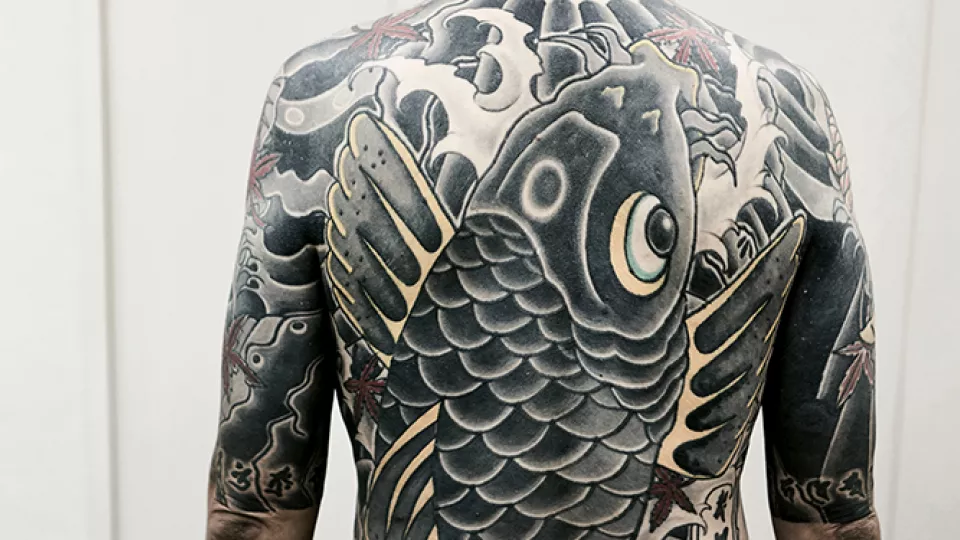In 2014, Andreas Johansson participated in a conference in Yokohama, Japan. One evening, he met a man with ties to the Yamaguchi-gumi clan. The conversation ultimately lead to a journey back to Japan the next year, where Johansson had the rare opportunity to follow the group with his camera for two weeks.
”I have always had a strong interest in religious symbols, and how they are used in non-religious contexts”, explains Andreas Johansson, who is a history of religions researcher at Lund University in Sweden.
The Yakuza are known for their intricate full-body tattoos, and when tattoos were banned in Japan in the late 1800s, they came to be strongly associated with the Yakuza.
The tattoos require over 200 hours of painful pricks by hand, using a metal pin attached to a bamboo stick. The images can cover large areas of the body, and even genitalia.
“The tattoo is a form of initiation. A member can tattoo the name of their boss to show loyalty. If he ends up in prison, his tattoo will show what group he belongs to and command respect”, says Andreas Johansson.
However, Andreas Johansson’s work also shows that the symbols worn by the members can have a very different, and often, spiritual meaning, more closely related to superstition than religion in the modern sense of the word.
“Even if a person carries a picture of a very famous Shinto-Buddhist God, they often have a personal interpretation and relationship to that God.”
Images of Samurai heroes are common – according to one of the legends, the Yakuza have their roots in the Samurai. Images of koi fish (a form of carp) symbolise a desire to move upstream and become the most powerful of all the mythical creatures: the dragon, which is another common symbol.
“The personal stories of the individual mafia members are also reflected in the images. That was the case with a man I met who used to be poor. He had a frog tattooed on his arm. It symbolised that he would never be poor again; if he spent 50 coins, he would get them back. The frog was like a spell and an insurance policy.”
But the Yakuza is not immune to globalisation: although the traditional Japanese gods still dominate, younger mafia members are increasingly mixing them with images from American gang culture, such as guns and expressions like ‘bad boy’.
Either way, tattoos as symbols for the Yakuza are still very important.
Andreas Johansson has a PhD in the History of Religions. He works at Lund University and is a fellow of Linnaeus University. He has a special interest in the religions of Asia and has conducted a number of field studies in South Asia, analyzing religious terminology and symbols used by non-religious organizations. Johansson is also an avid photographer.
